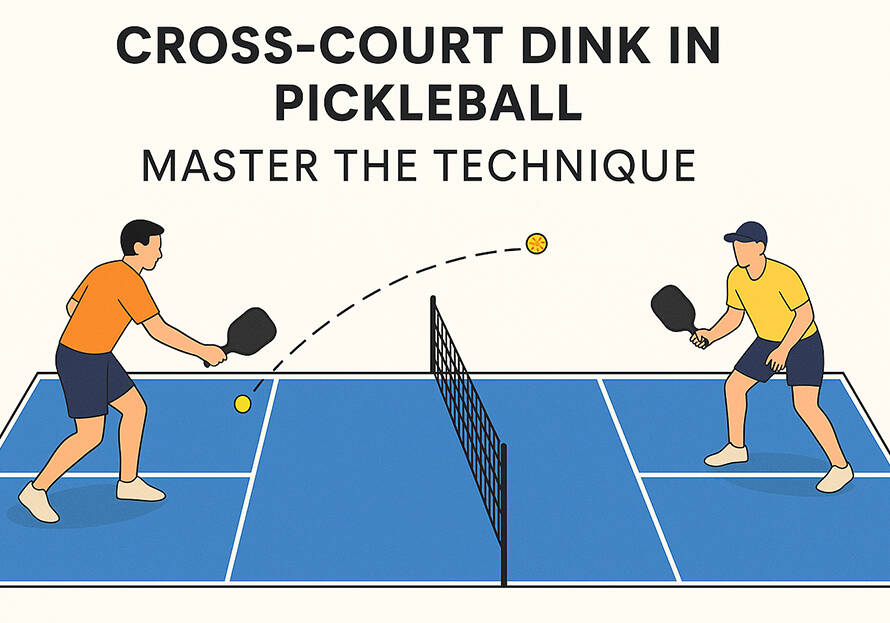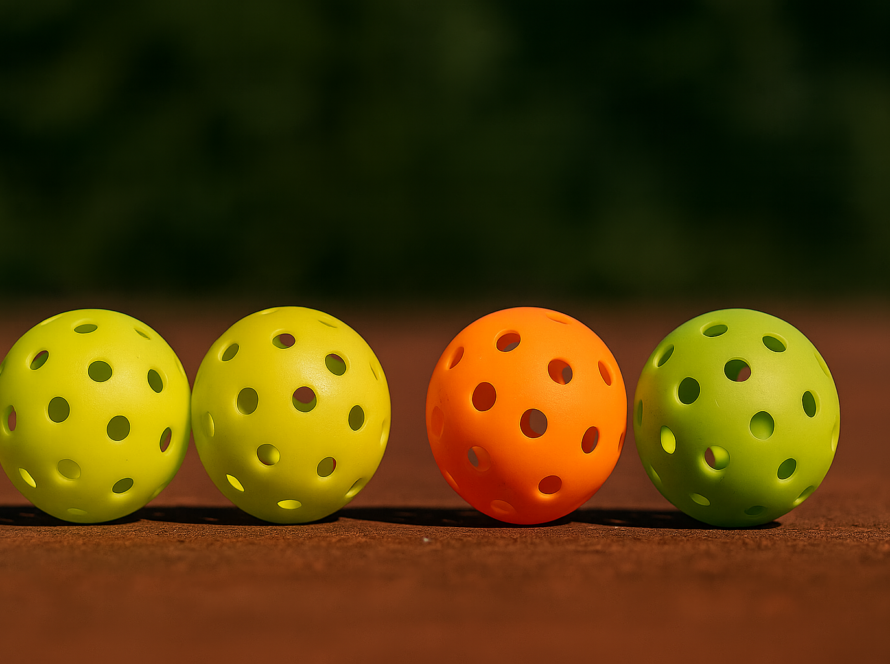When it comes to choosing pickleball paddles, the variety of options can be both exciting and confusing. From paddle weight and surface texture to grip size and shape, each element plays a key role in how the paddle feels in your hand and performs on the court. Understanding these components makes it easier to find a paddle that matches your playing style and level of experience.
Core Material: The Foundation of Performance
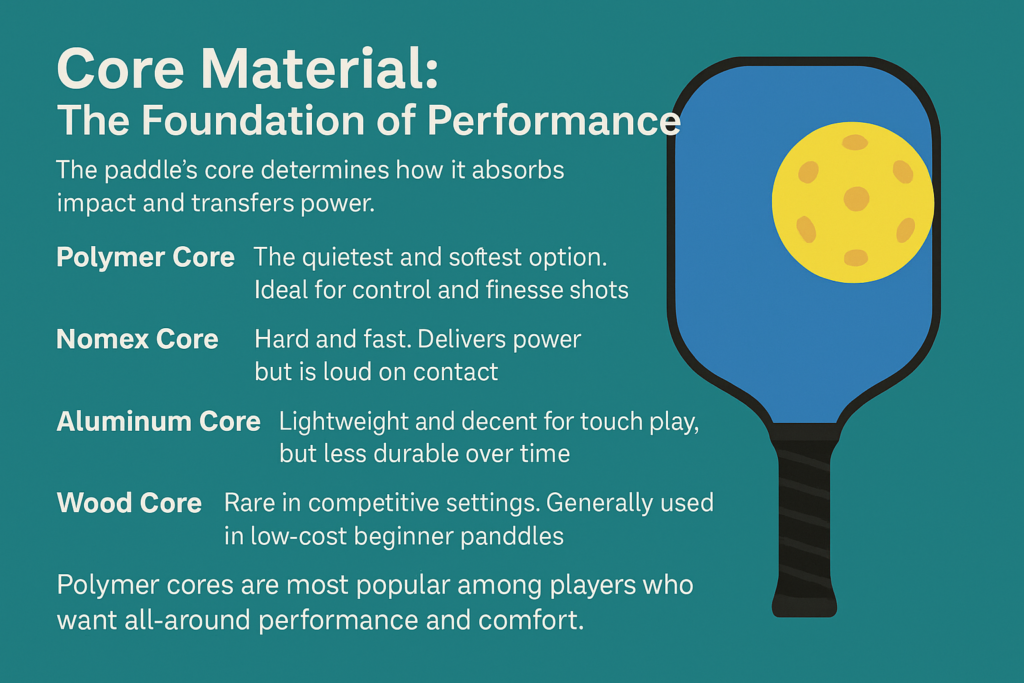
The paddle’s core determines how it absorbs impact and transfers power. Most modern pickleball paddles use one of the following core materials:
- Polymer Core: The quietest and softest option. Ideal for control and finesse shots.
- Nomex Core: Hard and fast. Delivers power but is loud on contact.
- Aluminum Core: Lightweight and decent for touch play, but less durable over time.
- Wood Core: Rare in competitive settings. Generally used in low-cost beginner paddles.
Polymer cores are most popular among players who want all-around performance and comfort.
Surface Material: Spin and Shot Control

The face or surface of the paddle affects the ball’s response, spin, and accuracy.
- Carbon Fiber: Durable with high spin potential. Offers excellent control.
- Graphite: Lightweight and responsive. Favored by touch players who value shot placement.
- Fiberglass: Adds power and “pop” to every hit. Great for offensive play.
For players who rely on control and placement, graphite or carbon fiber surfaces are more forgiving.
Core Thickness: Choosing the Right Feel
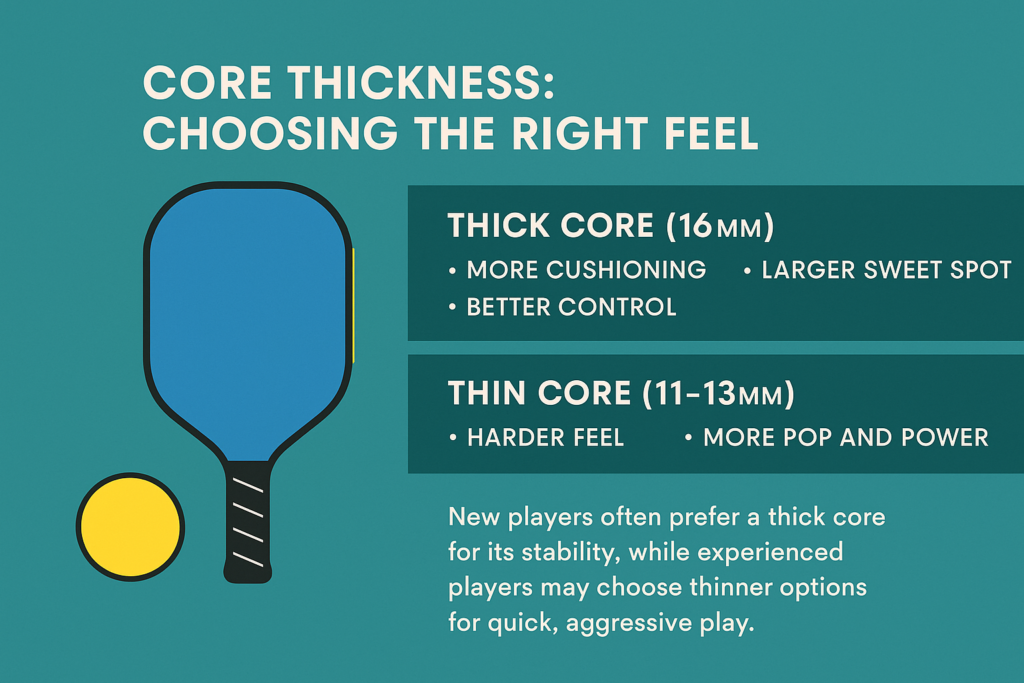
The thickness of the paddle’s core impacts how the ball feels at contact.
- Thick Core (16mm): More cushioning, larger sweet spot, better control.
- Thin Core (11–13mm): Harder feel, more pop and power.
New players often prefer a thick core for its stability, while experienced players may choose thinner options for quick, aggressive play.
Paddle Weight: Balancing Power and Mobility
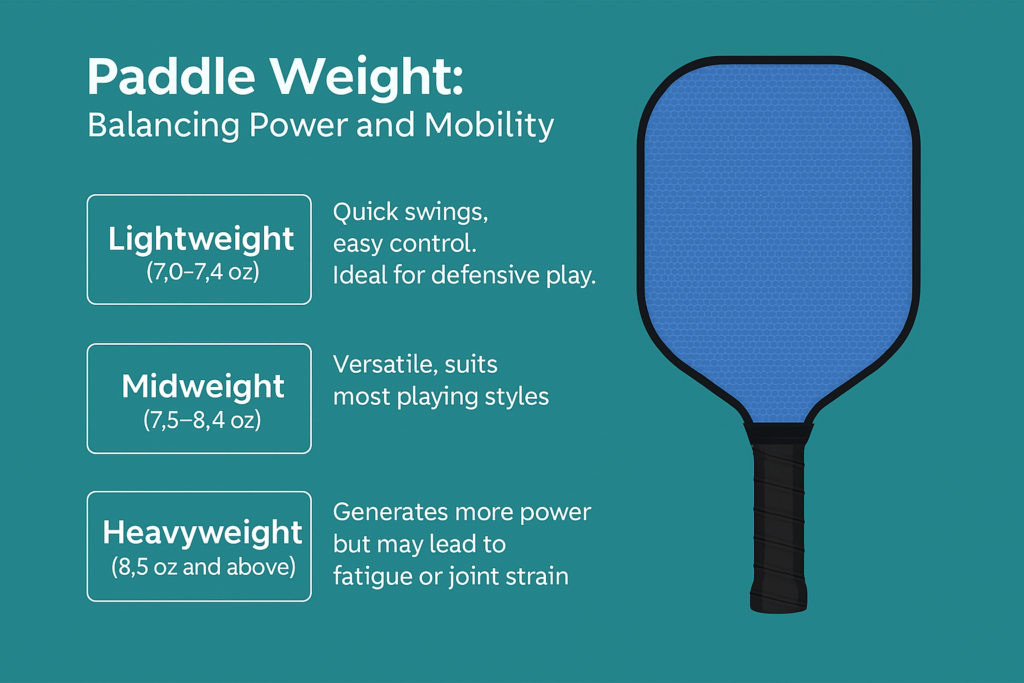
Weight is one of the most noticeable differences between pickleball paddles.
- Lightweight (7.0–7.4 oz): Quick swings, easy control. Ideal for defensive play.
- Midweight (7.5–8.4 oz): Versatile, suits most playing styles.
- Heavyweight (8.5 oz and above): Generates more power but may lead to fatigue or joint strain.
Most intermediate and advanced players choose midweight paddles for the best of both worlds.
Grip Size: Small Change, Big Difference
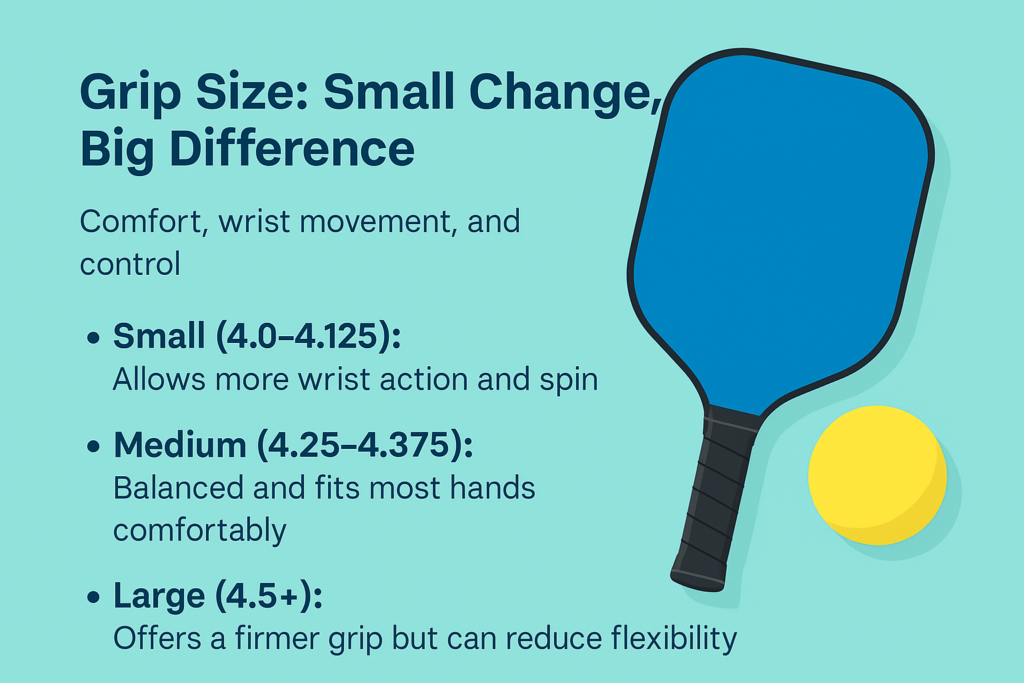
Grip size influences comfort, wrist movement, and control.
- Small (4.0–4.125″): Allows more wrist action and spin.
- Medium (4.25–4.375″): Balanced and fits most hands comfortably.
- Large (4.5+”): Offers a firmer grip but can reduce flexibility.
Grip size also affects how you handle volleys and dinks. Choosing the right grip reduces the risk of hand and elbow strain.
Paddle Shape: Standard, Elongated, or Widebody
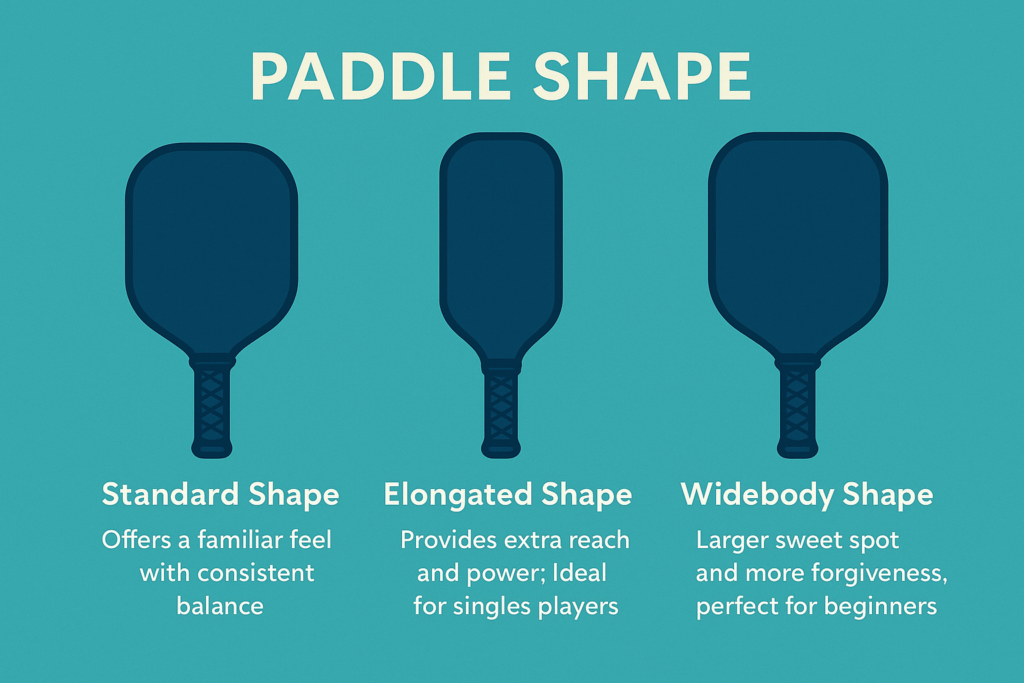
Different shapes serve different purposes:
- Standard Shape: Offers a familiar feel with consistent balance.
- Elongated Shape: Provides extra reach and power; ideal for singles players.
- Widebody Shape: Larger sweet spot and more forgiveness, perfect for beginners.
The shape can also influence paddle control at the net, especially during fast exchanges.
Certifications: Check for USAPA Approval
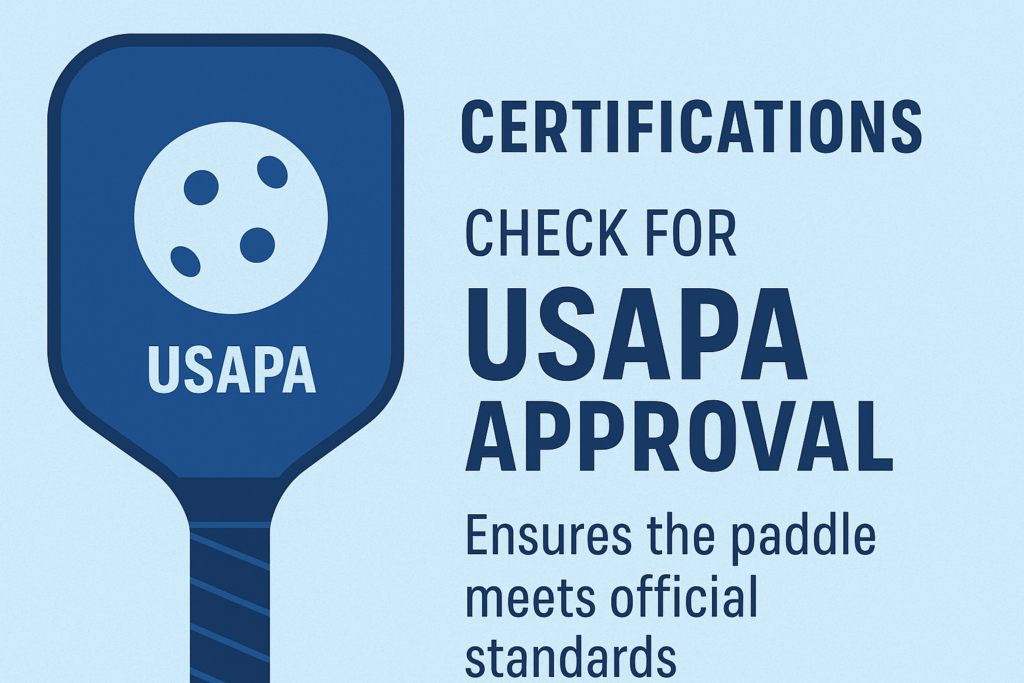
For players entering tournaments, it’s important to choose paddles that are USAPA-approved. This ensures the paddle meets official standards for size, material, and surface texture.
Price and Brand Considerations
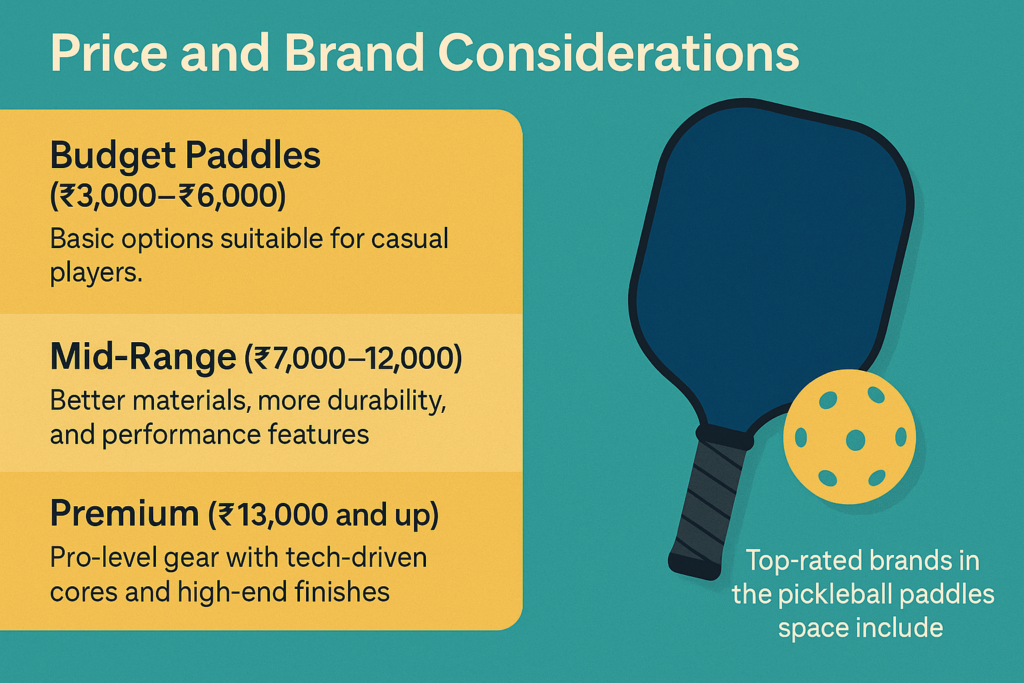
Price often reflects materials, construction quality, and performance. Here’s what to expect:
- Budget Paddles (₹3,000–₹6,000): Basic options suitable for casual players.
- Mid-Range (₹7,000–₹12,000): Better materials, more durability, and performance features.
- Premium (₹13,000 and up): Pro-level gear with tech-driven cores and high-end finishes.
Top-rated brands in the pickleball paddles space include Paddletek, Engage, Joola, Selkirk, and Onix.



